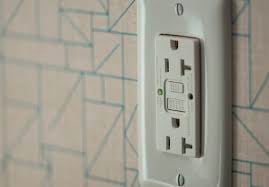When it comes to residential and commercial electrical safety, Ground Fault Circuit Interrupter (GFCI) receptacles are integral in safeguarding against electric shock risks. Whether through everyday use or unprecedented scenarios, encountering problems with your GFCI can be both inconvenient and hazardous. As an expert electrician, I aim to guide individuals who may have limited knowledge on this topic to understand common issues associated with GFCI outlets and provide efficient solutions for rectifying them.
Recognizing a Faulty GFCI Outlet
The first step in troubleshooting is recognizing when a GFCI outlet isn't performing its job correctly. The core function of a GFCI outlet, as noted by Weeklysafety.com, is to protect against ground faults, while also preventing fires and overheating. Signs you may have a faulty outlet include no power receptacle response when attempting to plug in devices or constantly tripping without any apparent cause. Performing regular tests using the built-in "Test" button can ensure your outlet remains functional.
To test the receptacle effectively, simply press the "Test" button—if the "Reset" pops out, your GFCI is in good working order. Should the "Reset" button not pop out, or you find that there's still no power despite pressing reset, then it's indicative of an issue requiring immediate attention—a malfunctioning GFCI receptacle needs to be replaced as soon as possible to maintain optimal safety.
Dealing with Outdoor Electrical Concerns
No power exterior outlets can pose serious dangers due to their exposure to elements such as rain or snow. Given that ESFI recommends using a GFCI in areas where water contact is likely, outdoor outlets are required by code to have this protection. Regularly checking these outdoor receptacles can prevent potential hazards associated with moisture ingress. It's critical that if there's no power at an exterior outlet, you should inspect for visible damage like cracks in the cover or casing which could indicate internal failures.
If an outdoor outlet ceases functioning after being exposed to moisture, it usually means the GFCI has done its job by tripping to prevent electrocution risk. Resetting the outlet once dry should restore functionality; however, if problems persist after ensuring it's dry and free from damage, further investigation by a qualified electrician is warranted.
Solving Garage Power Failures
No power in garage areas is another frequent indication of GFCIs working correctly—cutting off electricity flow when abnormality in current is detected. However, continuous loss of power can stem from overloaded circuits commonly found with high-power demand appliances found in garages. To diagnose this problem correctly, disconnect all devices and reset the outlet before reconnecting each device individually. This might help identify if a particular appliance is causing the trip.
Further complicating matters is that garages often house multiple outlets on the same circuit—if one trips, you could potentially lose power across multiple receptacles making pinpointing the problem more challenging. Expert attention may be needed to discern whether you're dealing with an isolated incident or systemic issue affecting your home's wiring integrity.
Identifying Internal Deficiencies with GFCIs
Apart from external causes affecting functionality, internal deficiencies within a GFCI can result in persistent nuisances like failing to provide power post-reset attempt or frequent unwarranted trippings—possibly signaling compromised internals. Herein lies importance of regular maintenance checks since degradation over time can diminish protective capacities as highlighted by statistics from This Old House:
"Two-thirds of all electrocutions in U.S. homes could be prevented if people installed [and maintained] the receptacles."
Testing monthly (APPA National Electric Code recommendation) ensures that attenuation within components doesn’t reduce responsiveness when faced with legitimate ground fault occurrences.
Advanced Troubleshooting Techniques
If basic resetting maneuvers fail consistently and no specific electrical device appears culpable for causing trips after isolation examination—it might be time for advanced troubleshooting techniques performed by certified electricians possessing requisite skills recommended by national safety standards.
Approaching complexities such as mixed-wire fault indicating indirect but hazardous cross-wiring beneath faceplates requires nuanced analyses best left for experienced hands —visual inspections alone might not suffice revealing underlying conduit complications necessitating sophisticated diagnostic equipment paired alongside seasoned expertise. If you're in need of help, get in touch with Harmony Electric.


